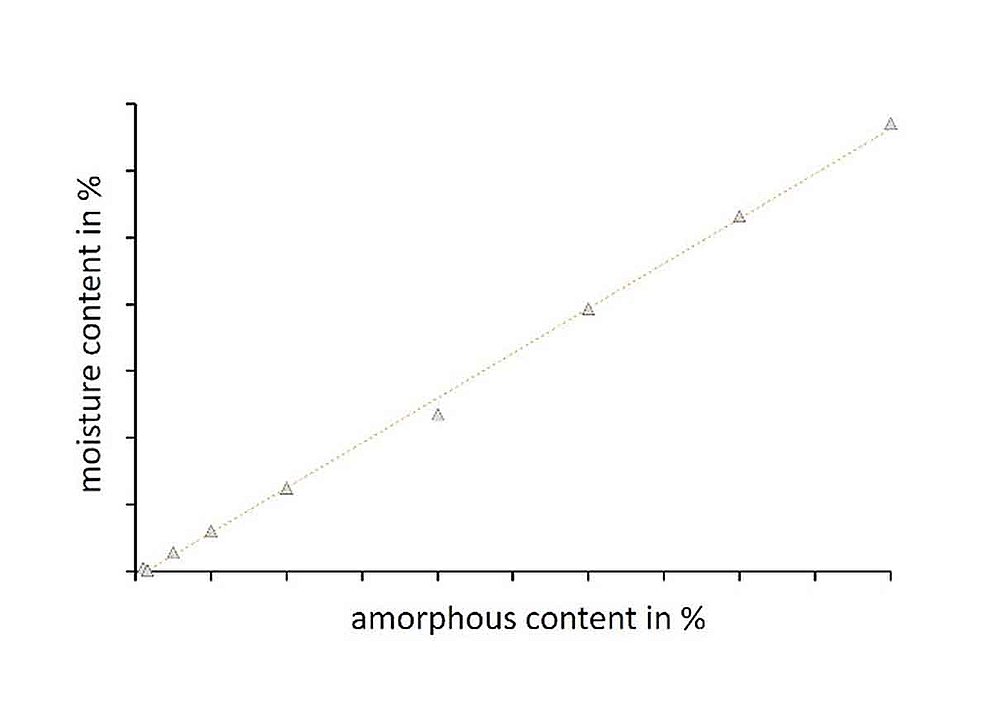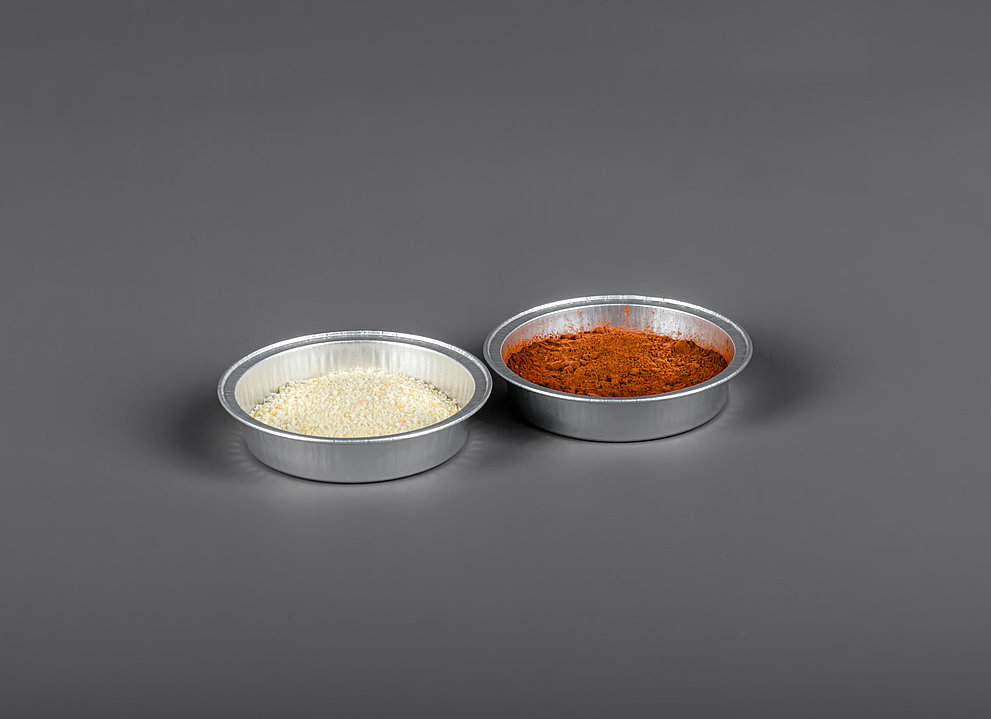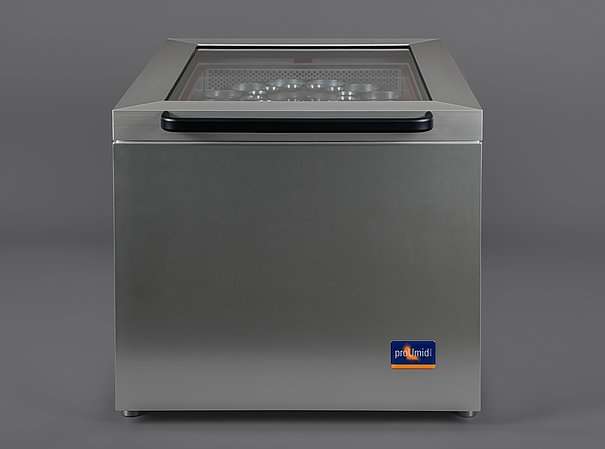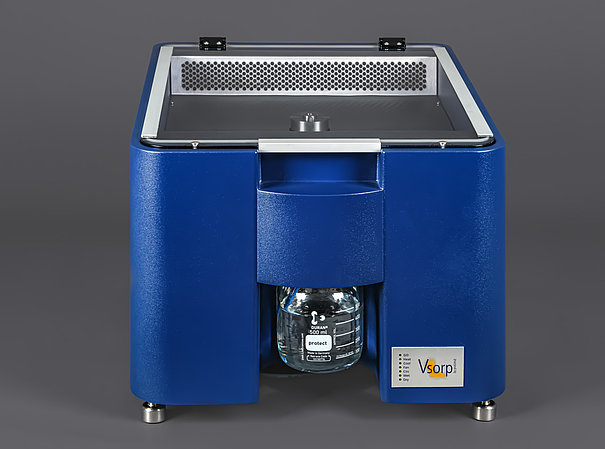Amorphous Content Determination
The quantification of the amorphous fraction is important in pharmaceutical and food research, as even the presence of small amorphous fractions can result in a significant change in product behavior. Since the amorphous state of a product has a higher hygroscopicity and thus water absorption compared to the crystalline state, dynamic water vapor sorption is ideally suited for quantification and to characterize the product-specific recrystallization kinetics as a function of temperature and humidity. The Application Notes provided below use practical examples to demonstrate both the analysis and the evaluation of DVS measurements to determine amorphous fractions.
Application Notes

Amorphous Lactose in the Pharmaceutical Industry
Products based on milk powder are used in many processed dry foods such as infant formula, sweets, baked goods, sports nutrition or instant sauces and soups. Lactose, as a sugar component of milk, can partially change into an amorphous state during production or processing instead of crystallizing. The high affinity of amorphous lactose to adsorb moisture promotes uncontrolled crystallization. As a result, even small amounts can have a major impact on the processing properties of the product, such as the rheological properties of chocolate. The crystallization of amorphous lactose in the formulation can also lead to lumping, for example, and thus have a negative impact on handling and sensory quality. To be able to adapt products and processes appropriately, it is crucial to characterize a product regarding the formation of amorphous components. Application Note 20-05 and White Paper 20-01 show a method for determining the amorphous content of lactose in food products using DVS and present a way of evaluating the results obtained.

Amorphous Lactose in Food
Lactose powders are often used in pharmaceutical products. Both during powder production and subsequent processing into the final product, processes such as drying, grinding or compaction often lead to the formation of an amorphous state. The control and quantification of the amorphous content is of great interest in pharmaceutical research due to its influence on the processing properties, physical and chemical stability and efficacy of drugs. This is attributed to the hygroscopicity of the amorphous phase, which leads to uncontrolled recrystallization when critical moisture contents are exceeded. Application Note 20-01 and White Paper 20-01 show the applicability of dynamic water vapor sorption analysis for the quantitative determination of amorphous lactose. A method for evaluating the measurement data and creating the calibration curve is presented.

Amorphous Fractions in Sucrose and Sucrose Containing Model Food Systems
Amorphous sucrose is often formed during the processing of sucrose and sucrose containing food mixtures. The hygroscopicity of the amorphous parts favors the sorption of water vapor from the ambient which leads to crystallization. The associated product changes, such as reduced flowability, caking and sensory characteristics, lead to a loss of product quality. Therefore, investigation of the crystallization kinetics and quantification of the amorphous content is important to draw conclusions on the product stability and performance. The Application Note 20-02 and the White Paper 20-02 present a method for the determination of amorphous fractions in sucrose and sucrose containing foods. A method for establishing a calibration curve as well as the influence of further ingredients on sucrose crystallization is demonstrated with the help of model food systems.
Literature References for Amorphous Content Determination with the proUmid DVS Instruments
Jasper Vollenbroek, et al. „Determination of low levels of amorphous content in inhalation grade lactose by moisture sorption isotherms.“ International journal of pharmaceutics 395, 62-70, 2010. DOI
Matthias Gorny, et al. „Quantifying the degree of disorder in micronized salbutamol sulfate using moisture sorption analysis.“ Drug development and industrial pharmacy 33, 235-243, 2007. DOI
Ronja Wittmann, „Amorphe Laktose – Untersuchungen zur Quantifizierung und zum Einfluss auf die Stabilität von Pulvermischungen zur Inhalation“, Dissertation Christian-Albrechts-Universität, Kiel, 2014. Link
Wolfgang Danzl and Gottfried Ziegleder. „Untersuchung der Kristallisation amorpher Lactose in Milchpulver anhand Dynamischer Wasserdampfsorption.“ Chemie Ingenieur Technik 80, 351-357, 2008. DOI



